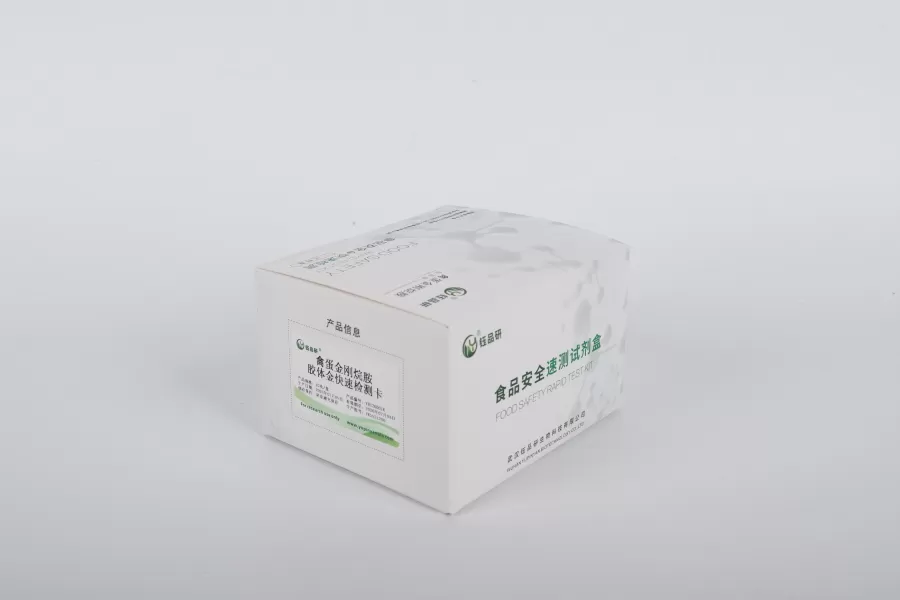As consumers' attention to food safety continues to increase, poultry eggs, as an important source of protein in the daily diet, have a direct impact on public health. Traditional poultry egg detection methods often rely on complex laboratory equipment, which takes a long time and is difficult to meet the needs of rapid screening. The emergence of the egg quality and safety quick inspection program has effectively solved this pain point by integrating portable testing tools and standardized implementation processes, and has become an important technical support for the current poultry egg safety supervision and production enterprises.
First, the core tools of poultry egg quick inspection: from basic screening to accurate identification
The efficiency of the egg quality and safety quick inspection program cannot be separated from the support of diverse testing tools. According to different detection objectives, common tools can be divided into the following categories:
1. Colloidal gold immunochromatography test strip: For common pathogenic bacteria such as Salmonella, avian influenza virus, Newcastle disease virus, etc., rapid color development through antigen-antibody specific reaction, 5-10 minutes to produce results, suitable for enterprise workshops or primary supervision of the site of preliminary screening.
2. ATP fluorescence detector: based on the principle of "ATP-luciferase-oxygen" reaction, by detecting the ATP content produced by microbial metabolism on the surface or contents of eggs, quickly determine the degree of pollution (such as Escherichia coli, Staphylococcus aureus, etc.), the detection time can be shortened to 1 minute.
3. Raman Spectroscopy Detector: Using molecular vibration spectrum characteristics, it can directly identify agricultural and veterinary drug residues (such as chloramphenicol, malachite green), heavy metals (lead, cadmium) and other components in poultry eggs without complex pretreatment. The accuracy reaches ppm level, especially suitable for high-risk substance screening.
4. Multi-parameter rapid detection card: Integrated pH value, nitrite, volatile base nitrogen and other index detection functions, a card can synchronously analyze the freshness and pollution of poultry eggs, easy to operate and low cost.
Second, the whole process implementation guide: From sample collection to the result of the
poultry egg quality and safety quick inspection program, it is necessary to strictly follow the standardized process to ensure the accuracy and traceability of the detection data. The specific steps are as follows:
#1. Sample collection: Ensure representative and aseptic operation
- Follow the principle of "random, stratified, multi-point", extract 10% -20% of the samples from the batch to be tested, cover different positions (such as upper, middle, lower), avoid concentrated collection of the same area resulting in deviations in results.
- Sampling tools need to be sterilized in advance (such as sterile cotton swabs, disposable sampling bags) to prevent foreign microorganisms from contaminating the samples.
#2. Pretreatment: Simplify the operation and keep the target
- Test strip/test card: directly collect the surface or contents of the eggshell (such as egg yolk, egg white), add buffer or add the sample directly according to the instructions.
- ATP detection: wipe the surface of the eggshell (key areas such as pores and cracks) with a sterile cotton swab, and put the cotton swab into the detection reaction tube.
- Raman spectroscopy detection: without sampling, the probe is directly aimed at the surface of the egg (to avoid eggshell stains), and the instrument is automatically focused for analysis.
#3. Detection operation: strictly follow the procedures
- Instrument calibration: Before each use, the equipment needs to be calibrated with standard products (such as standard ATP solution for ATP detector) to ensure that the detection error is within the allowable range.
- Color observation: The colloidal gold test strip needs to observe the results within the specified time (usually 10 minutes) to avoid false positives due to timeout; Raman spectrometer needs to select the appropriate excitation wavelength and scanning range according to the detection target.
#4. Results Interpretation and Review
- Positive Sample Processing: For samples with positive rapid test results, it is necessary to immediately review with laboratory routine methods (such as culture method, mass spectrometry) to confirm the type and content of contaminants.
- Data Records: Establish an electronic ledger to record the test date, sample batch, test indicators, results and other information, which is convenient for subsequent traceability and quality analysis.
Third, Precautions: To ensure the reliability of the fast test program
In order to avoid the "misjudgment" or "missed test" of the fast test results, it is necessary to pay attention in actual operation:
- Environmental Control: The detection area needs to be kept clean to avoid dust and microbial interference; the equipment needs to be cooled during the high temperature in summer to prevent the failure of the reaction reagents.
- Tool maintenance: The test card and test strip need to be used within the shelf life, and the instrument is regularly maintained (such as cleaning the probe and replacing consumables).

- training: Operators need to be familiar with the principle and operation process of each tool to avoid deviation of results due to operation errors.
Egg Quality and Safety Quick Inspection Program has shortened the cycle of traditional laboratory testing from a few days to 1 hour through "tool portability + process standardization", providing an efficient solution for the safety supervision of the whole chain of egg production, circulation and sales. With the continuous iteration of technology, the future quick inspection tools will be more miniaturized and intelligent, further promoting the upgrade of egg safety management to "real-time monitoring and risk early warning", and building a strong defense line for the public's "safety on the tip of the tongue".

